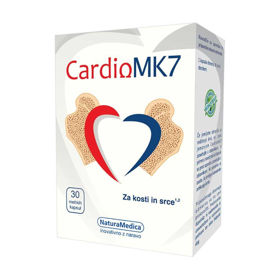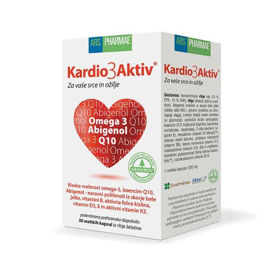Customer question:
What is bradycardia? Anonymous customer's question
Pharmacist's answer:
Bradycardia is when the heartbeat (pulse) is slower than usual. The exact boundary that separates an average heart rate from bradycardia is not strictly defined and may vary from person to person. Classically, the heart rate in the case of bradycardia is considered to be less than 60 beats per minute.
Bradycardia is not always just a pathological condition. It can represent a normal physiological response to specific situations, such as sleep, excellent physical fitness, or an occasional decrease in heart rate in young and healthy people.
However, bradycardia can cause problems if it leads to dizziness, weakness, fatigue, visual disturbances, or even fainting symptoms. Bradycardia can occur due to various causes, including the following:
- Age: It may be expected that older people have a slightly slower heart rate.
- Sports fitness: very physically fit athletes usually have a lower resting heart rate.
- Heart disease: Heart diseases such as heart valve disease, heart failure, or heart attack can lead to bradycardia.
- Disorders of the conduction system of the heart: defects in the heart's firing system can cause slower transmission of electrical impulses, leading to bradycardia.
- Use of certain medications: Certain medications, especially those used to treat cardiac arrhythmias, can cause a decrease in heart rate.
- Hypothyroidism: lack of thyroid hormones can affect heart rate.
Does bradycardia need treatment?
This depends on several factors, including the condition's causes, symptoms, and severity. Bradycardia that has no symptoms and is not associated with other health problems may not require specific treatment. In some cases, a low heart rate can be a normal physiological response, especially in people who are physically active and in good physical condition. However, if bradycardia causes symptoms such as dizziness, weakness, fatigue, or fainting, or if it is associated with other heart conditions, it may require treatment.
Treatment options may include stripping approaches:
- Lifestyle changes: For some people, lifestyle changes such as regular physical activity, a healthy diet, and avoiding stimulants can help improve heart rate.
- Drugs: in some cases, the doctor may prescribe drugs that increase the heart rate, such as atropine or drugs to increase the activity of the sinus node.
- Pacemaker: If bradycardia remains problematic and causes severe symptoms, your doctor may prescribe a pacemaker. This small device is inserted under the skin on the chest and, when necessary, emits electrical impulses that stimulate the heart.
Treatment will depend on the specific circumstances of each individual. A person with symptoms of bradycardia must consult their doctor, who will assess the condition, make a diagnosis, and suggest appropriate treatment according to individual needs.
Interesting reading: Ventricular tachycardia
Interesting reading: Low heart rate













